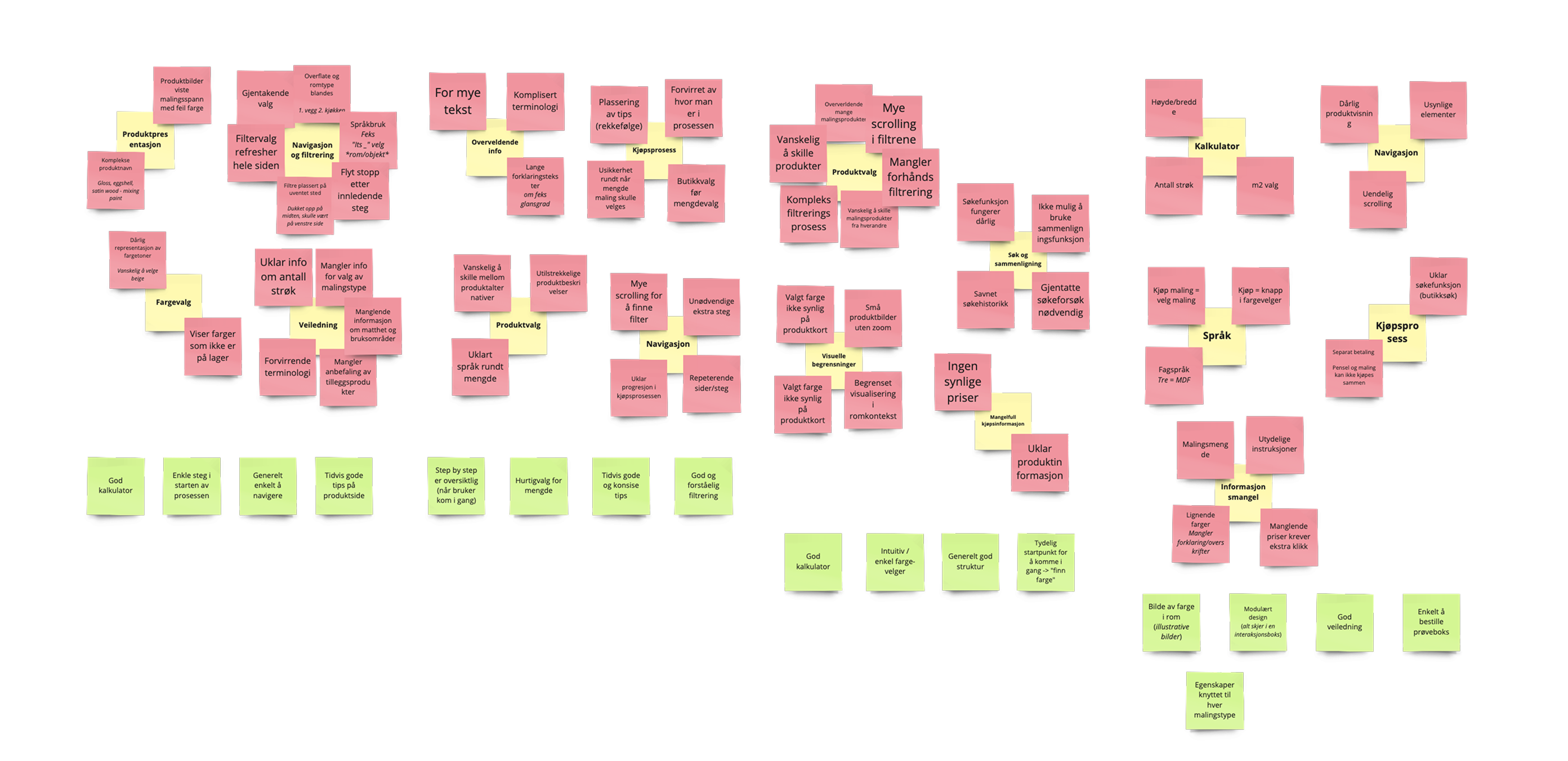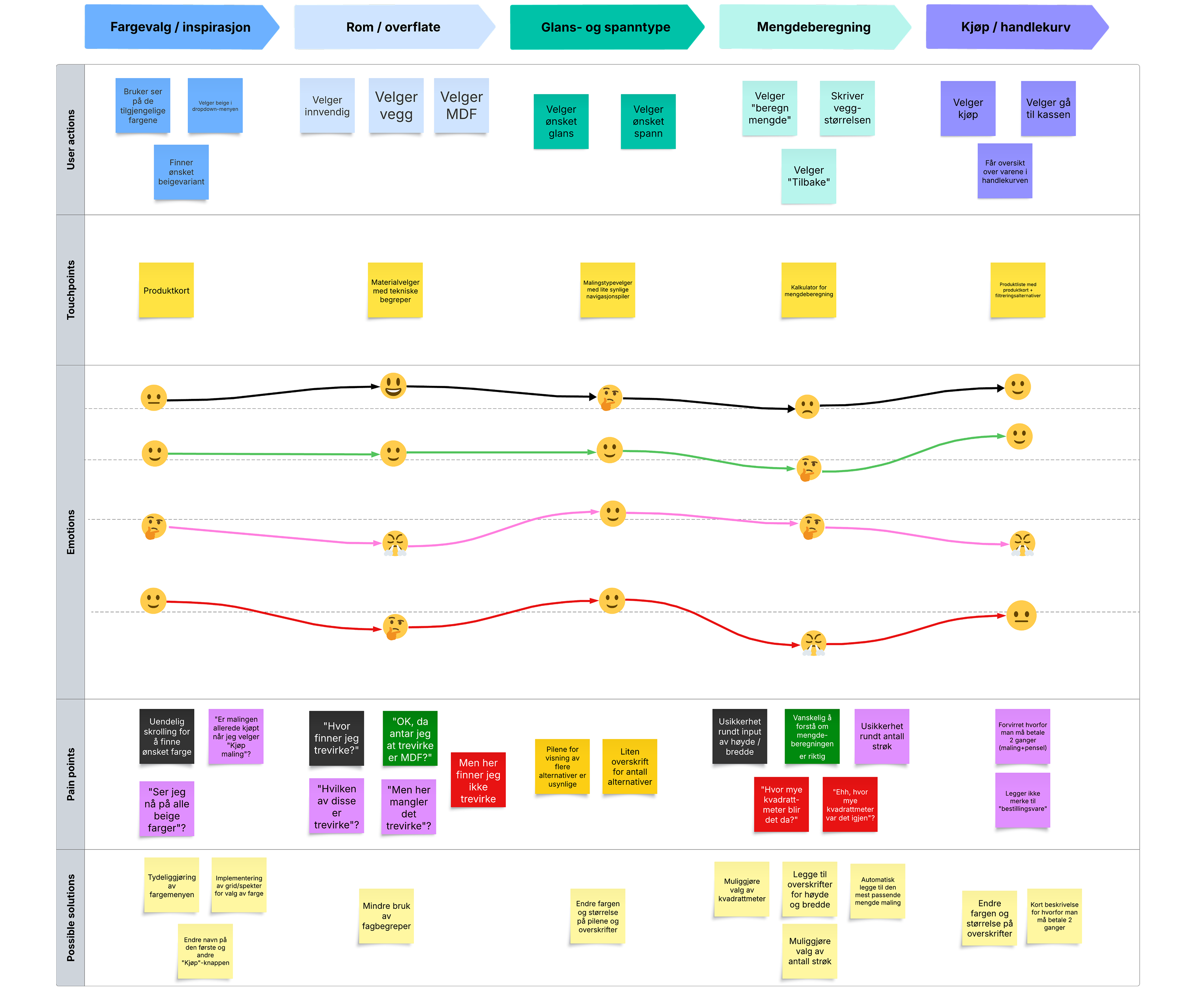Bachelor thesis (WIP)
A comprehensive analysis and redesign of the digital paint purchasing experience, aimed at reducing decision complexity, increasing customer confidence and conversion.
An in-depth UX research and design project focused on improving the online paint purchasing experience. The project centered on extensive user testing of existing solutions, detailed analysis of pain points, and development of a new user-centered design approach to simplify the complex decision-making process involved in buying paint online.
Current digital paint purchasing interfaces present several critical challenges. Users struggle with complex calculations for paint quantity requirements, while navigation systems often confuse with unclear product differentiation. Technical terminology creates barriers to understanding, and visual hierarchies fail to effectively guide users through the purchase journey. These issues lead to significant user hesitation and reduced confidence in making online paint purchases, ultimately affecting conversion rates and customer satisfaction.
The project employed a comprehensive research approach through user testing across four major paint retailers' digital platforms: Dulux, Jernia, Fargerike, and Nordsjö. For each platform, we conducted testing were the users was asked to purchase paint while speaking their thoughts aloud throughout the process. This thinking aloud approach captured their immediate reactions and challenges as they moved through the interfaces. We complemented these observations with System Usability Scale (SUS) scoring, creating a dual approach that provided both measurable metrics and detailed insights into user behavior and pain points.
The project utilized a systematic design thinking approach. Through detailed insight analysis of existing solutions and comprehensive user journey mapping, we developed a clear
understanding of user needs and pain points. We are now looking into ideation and concepts for the solution that shall solve the current pain points related to buying paint online.
After the ideation and concept phase, we will test our ideas and concepts to find out what's working and what's not. This emphasizes iterative prototyping and testing, allowing us to
validate design decisions through user feedback before committing to final solutions. Starting with low-fidelity prototypes, we'll gradually refine our designs based on user responses,
ensuring that each iteration better addresses the paint purchasing challenges we identified in our research phase. This systematic approach to testing and refinement will help us develop
navigation patterns, information architecture, and interaction flows that truly serve user needs while reducing the complexity of online paint purchasing.

Insight gathered
Through systematic analysis and user-centered design principles, we developed insights that lay the groundwork for significant improvements in the digital paint purchasing experience. Our findings provide a clear roadmap for reducing complexity and increasing user confidence in the online paint buying process. The project remains actively in development, with ongoing user testing and refinement of proposed solutions driving continuous improvement in user interface design and interaction patterns.

Customer journey map for one of the solutions
Let's collaborate
